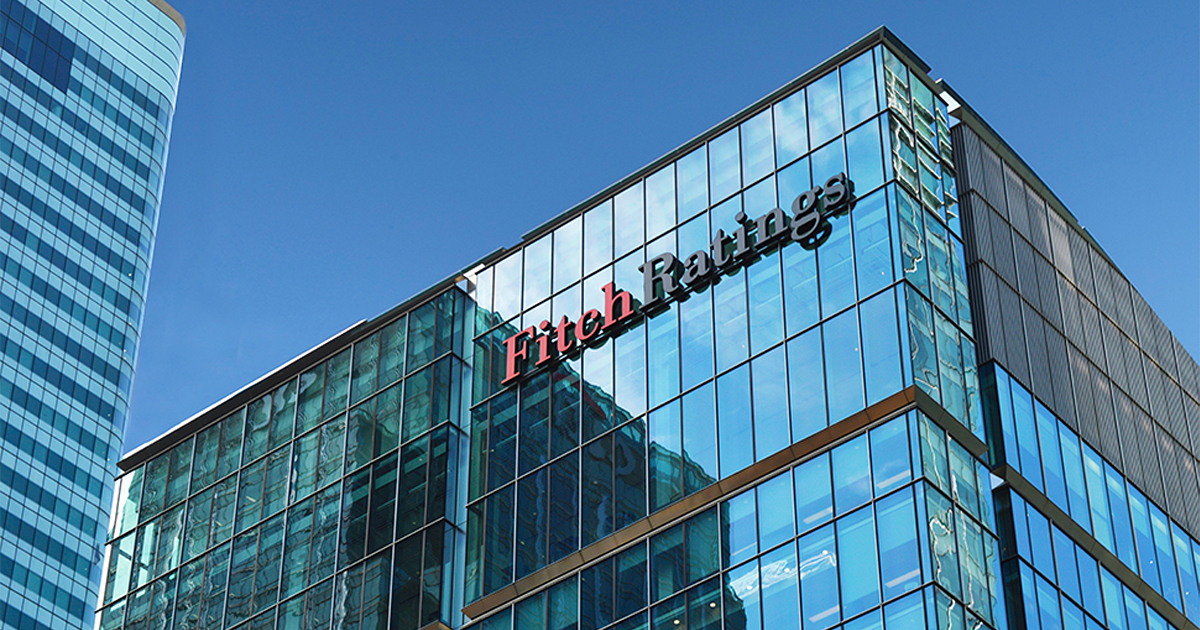The Negative Outlook reflects lingering uncertainty around the debt trajectory following the sharp deterioration in India’s public finance metrics due to the pandemic shock from a previous position of limited fiscal headroom.
Fitch Ratings has affirmed India’s Long-Term Foreign-Currency Issuer Default Rating (IDR) at ‘BBB-‘ with a Negative Outlook. Fitch Ratings said in a statement.
India’s rating balances a still strong medium-term growth outlook and external resilience from solid foreign-reserve buffers, against high public debt, a weak financial sector and some lagging structural factors. The Negative Outlook reflects lingering uncertainty around the debt trajectory following the sharp deterioration in India’s public finance metrics due to the pandemic shock from a previous position of limited fiscal headroom. Wider fiscal deficits, and government plans for only a gradual narrowing of the deficit, put greater onus on India’s ability to return to high levels of GDP growth over the medium term to stabilise and bring down the debt ratio, Fitch said.
“We forecast a 12.8% recovery in GDP in the fiscal year ending March 2022 (FY22), moderating to 5.8% in FY23, from an estimated contraction of 7.5% in FY21. However, a recent surge in coronavirus cases poses increasing downside risks to the FY22 outlook. This second wave of virus cases may delay the recovery, but it is unlikely in Fitch’s view to derail it. In particular, the strong rebound in 2HFY21 and ongoing policy support underpin our expectations for a recovery. We expect pandemic-related restrictions to remain localised and less stringent than the national lockdown imposed in 2Q20, and the vaccine rollout has been stepped up.” the statement said.
Fiscal metrics have deteriorated sharply in the context of the macroeconomic shock and efforts to support health outcomes and the economic recovery. We estimate a general government deficit of 14.0% of GDP in FY21 (excluding divestment) from 7.3% in FY20, consistent with a deficit of 9.5% for the central government. Notably, part of the increase in the FY21 deficit (around 1.5% of GDP) reflects increased transparency by bringing off-budget spending on budget. The government is repaying loans to the Food Corporation of India from the National Small Savings Fund and then to keep such subsidy spending on-budget.
We expect the general government deficit to narrow to 10.8% of GDP (7.1% central government), on the basis of our expectations of growth recovery and strong revenue performance in 2HFY21.
The medium-term debt trajectory is core to our rating assessment, as higher debt levels constrain the government’s ability to respond to future shocks and could lead to a crowding out of financing for the private sector, in our view, said Fitch. India’s current ability to finance its deficits domestically is a strength relative to most ‘BBB’ peers. Foreign currency government debt comprises only 6% of total debt (‘BBB’ median 33%) and only 2% of government securities are held by non-residents. Ten-year government bond yields averaged roughly 6% in FY21, due to the Reserve Bank of India’s (RBI) accommodative monetary policy settings, but are likely to rise in the coming year as liquidity is withdrawn gradually.
“We estimate that general government debt rose to 90.6% of GDP in FY21 from 73.9% in FY20, well above the current ‘BBB’ median of 54.4% in 2020,” said Fitch.
The debt dynamics are sensitive to medium-term growth assumptions. We expect India’s potential growth to remain robust relative to ‘BBB’ peers at around 6.5%. The government remains reform-minded, evidenced by the passing of agricultural and labour market reforms in November. These reforms could lift growth if implementation risks are addressed, particularly for the agricultural reforms which have met stiff resistance by farmers. The Production-Linked Incentives scheme to attract FDI and planned increase in public capex could boost private sector investment.
Weaknesses in India’s financial sector pose a risk to the medium-term outlook. The degree of asset quality deterioration from the pandemic shock is unclear, amid regulatory forbearance measures and renewed pressures from the second wave. Private banks have stepped up provisioning in recent months, but persistent weaknesses in public-sector banks and risk aversion are likely to keep credit growth constrained in the near term. The proposed injection in the recent budget of INR200 billion (0.1% of GDP) of new capital into state banks is likely to prove insufficient to alleviate the stress, in Fitch’s view. The proposed establishment of an asset reconstruction company and an asset management company to deal with bad banking sector assets could be positive depending on the details of its structure and implementation.
We expect inflation to decline to an average of 4.4% in FY22, after hovering above the RBI’s 2%-6% target band for much of FY21. Price pressures have moderated, even though both headline and core inflation remain near the upper end of the band. We expect the RBI to keep the policy rate stable in the coming year, following 115bp in cuts since March 2020.
A strengthening of India’s external position in the last year and the relatively closed nature of its capital markets enhance the country’s resilience to bouts of global financial market volatility. Foreign-exchange reserves rose by roughly USD100 billion to USD579 billion in FY21 (12.4 months of current external payments cover). Meanwhile, the current account shifted to an estimated temporary surplus of 0.8% of GDP in FY21, driven largely by a fall in imports. Normalisation of imports in FY22 will drive the current account back to a modest 1.2% of GDP deficit under our forecasts.
Rating sensitivities
The main factors that could, individually or collectively, lead to negative rating action/downgrade:
– Public Finances: Failure to reduce sufficiently the fiscal deficit to a level consistent with putting the general government debt/GDP ratio on a downward trajectory.
– Macro: A structurally weaker real GDP growth outlook, for instance due to continued financial-sector weakness or reform implementation that is lacking, which weighs further on the debt trajectory.
The main factors that could, individually or collectively, lead to positive rating action/upgrade are:
– Public Finances: Implementation of a credible medium-term fiscal strategy to bring general government debt down after the pandemic, toward levels of ‘BBB’ category peers.
– Macro: Higher sustained investment and growth rates in the medium term without the creation of macroeconomic imbalances, such as from successful structural reform implementation and a healthier financial sector.





